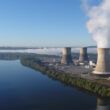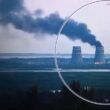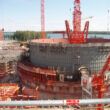Low-carbon, low-cost electricity 24/7
By Tony Pietrangelo, July 28, 2011
Yes, nuclear energy is different than other energy sources. This happens to be both a great strength and, if not managed properly, sometimes a great challenge.
Nuclear energy is the only low-carbon electricity source that can operate around the clock on a mass scale. It is the largest solution to global goals for reducing carbon emissions in the power sector: It provides 70 percent of US electricity generated by low-carbon sources; globally, it produces nearly half of all low-carbon electricity.
Once a nuclear energy facility is built, it produces electricity at a fraction of the cost of other sources, both fossil-based and renewable. Based on these attributes, nuclear energy stands alone as a secure, valuable source of power both for economic growth and to reduce air pollution. No other energy source can do both on such a large scale.
Nuclear energy is not always given credit for its environmental and economic benefits, while its risks often are viewed beyond what the realities of physics and medical science warrant. The earthquake- and tsunami-related accident at the Fukushima Daiichi nuclear power plant in Japan has given new momentum to those who oppose nuclear energy generation in America and elsewhere. The widespread public concern over the events in Japan is appropriate and understandable. This accident certainly requires a thorough investigation, and the global nuclear energy industry should respond decisively to lessons that emerge. But this is not a time for shortsighted actions based on irrational fears or political motivation.
Continuous evaluation and improvement. Needless to say, all those in the nuclear energy industry must apply the lessons learned from Fukushima, and in particular prevent damage caused by sudden flooding. While a tsunami is improbable at many of our nuclear energy facilities in the United States, it would be foolish to miss the larger lesson: We must always evaluate each of our 104 reactors to make sure they can withstand severe conditions regardless of the cause, including the loss of significant operational and safety systems.
We did this after the terror attacks of September 11, 2001, and as a result greatly improved security at US reactor sites while confirming that our reactors can sustain the impact of a deliberate airline crash without releasing radiation at levels that would harm the public. We have to use our imagination for the worst possible case, and plan for it.
This work is ongoing, but it is happening — and again, this makes nuclear energy somewhat unique. No other energy sector has such a thorough process for continuous safety evaluation and improvement. Nuclear energy facilities already are designed to withstand earthquakes of historic magnitude in whatever region they are located. In situations that might have caused problems — Hurricanes Katrina and Andrew, for example — nuclear plants were shut down safely with no public consequences. As an industry, we can’t be complacent. So we are working with the government’s independent regulator, the Nuclear Regulatory Commission, to make sure nuclear energy facilities meet or surpass standards for safety, security, and emergency preparedness. No other energy source faces this kind of scrutiny at each facility.
The nuclear energy industry understands why this independent oversight is necessary. Yet along with this scrutiny, we hope policymakers, scientists, and the general public will recognize the unique combination of benefits that nuclear energy provides:
- Significant reductions in carbon emissions: Each year, 104 US reactors avoid 650 million metric tons of carbon dioxide from entering our atmosphere, nearly as much as is released from all US passenger cars in operation. Germany’s decision to turn away from nuclear energy will result in 400 million tons of extra carbon emissions by 2020, according to a Breakthrough Institute analysis.
- Lower utility bills: At 2.14 cents per kilowatt-hour of electricity, nuclear energy facilities are the lowest-cost producer of baseload electricity, even in the absence of a tax on carbon, which would significantly increase the cost of all fossil-fueled electricity sources.
- Less land required: About 1.7 square miles of land is used to produce 1,800 megawatts of power from nuclear energy, far less than wind (169 square miles) and solar photovoltaics (21 square miles).
- More good-paying jobs: The US nuclear energy industry employs approximately 120,000 people, at salaries that pay about 36 percent more than the average rate in the local areas where reactors are based. Each nuclear plant generates $430 million per year in economic benefits.
Risks vs. benefits. All these benefits have to be weighed against the concerns of those who view the risks as too great to bear. There were, for example, people who wanted to shutter the nation’s nuclear reactors after the September 11 terrorist attacks, for fear they would be targeted next. Had we listened to them, today we would have more harmful emissions, higher utility bills, more land devoted solely to energy production (particularly in and around urban areas), and tens of thousands fewer jobs.
Those reasons alone have compelled policymakers to recognize that an abandonment of nuclear energy would be a surrender of both our economic and environmental goals. Instead, policymakers and the industry itself have responded to each challenge with greater efforts to enhance safety, increase security, and do everything in our power to continue delivering electricity while protecting the planet.
The choice we have made — the choice we must always make — is to treat nuclear energy as a source of affordable, low-carbon power, and good-paying jobs. Is it risk-free? Of course not. But a world without nuclear energy would be fraught with far greater risks: The risk of climate change. The risk of economic stagnation. The risk of unmet energy needs. The risk of continued dependence on foreign energy. Although Germany and Italy have decided to take those risks and bear their cost, many other nations are moving in the other direction. Worldwide, there are 61 reactors under consideration and plans for another 158. That is a studied and sober choice toward a better energy future.
Topics: Nuclear Energy
Share: [addthis tool="addthis_inline_share_toolbox"]














